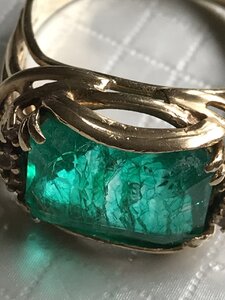Types of Treatments to Enhance the Color of Gemstones
Gemstones have captivated people for centuries, not only for their rarity but for their vibrant colors. However, not all gemstones start out with the eye-catching hues we often associate with them. Many stones undergo treatments to enhance their color and overall appearance. Understanding these treatments is essential whether you’re a collector, jeweler, or simply someone who enjoys wearing beautiful stones. In this blog, we’ll explore some of the most common types of treatments used to bring out the best in gemstones.
1. Heat Treatment
One of the most common and widely accepted methods of enhancing gemstones is heat treatment. This involves heating a gemstone to high temperatures, which can intensify or even change its color. For example, sapphires and rubies are often heat-treated to bring out deeper, more vibrant shades of blue and red.
- Why it's done: Heat treatment can remove impurities, improve clarity, and enhance color.
- Common gemstones treated: Sapphires, rubies, aquamarines, and amethysts.
- Durability: Heat treatment is generally considered stable and permanent.
2. Irradiation
Irradiation involves exposing gemstones to high-energy radiation, which alters their atomic structure and, in turn, their color. This method is typically followed by heating to stabilize the color change.
- Why it's done: To produce or deepen colours that aren’t naturally present or intense in the gemstone.
- Common gemstones treated: Blue topaz is commonly irradiated to give it its striking blue hue. Diamonds and certain types of quartz (like smoky quartz) are also treated this way.
- Durability: The color change is permanent, but some irradiated stones may fade over time when exposed to sunlight.
3. Dyeing
Dyeing involves adding color to a gemstone by introducing colored dyes into its structure. This is usually done to porous stones or those with cracks that can absorb the dye. While dyeing can dramatically enhance a gemstone's appearance, it is less permanent and considered a lower-tier treatment.
- Why it's done: To change or intensify a gemstone’s color, often to mask less desirable natural shades.
- Common gemstones treated: Agate, jade, lapis lazuli, and turquoise.
- Durability: The dye can fade over time, especially if exposed to harsh sunlight or chemicals. Dyed stones may also require special care to maintain their color.
4. Fracture Filling
Fracture filling is a process used to enhance both the color and clarity of gemstones. It involves filling cracks and fractures with a substance such as resin or glass. This can improve the stone’s transparency and appearance.
- Why it's done: To make lower-quality gemstones appear more visually appealing and hide visible fractures.
- Common gemstones treated: Diamonds, emeralds, and rubies.
- Durability: Fracture filling is not always permanent, as the filler material can wear off or degrade over time. Stones treated this way should be handled with care.
5. Oil Treatment
Oil treatment is a traditional method used mainly on emeralds. The gemstone’s fractures are filled with oil (often cedar oil) to make them less visible, enhancing both the clarity and color of the stone.
- Why it's done: To improve the appearance of emeralds, which are often riddled with internal fractures.
- Common gemstones treated: Primarily emeralds.
- Durability: This treatment is not permanent and may need to be reapplied over time, especially if the gemstone is exposed to heat or solvents.
6. Diffusion Treatment
Diffusion treatment involves exposing a gemstone to chemicals and high heat to introduce a new color into the surface layer. The color created by this treatment is often just skin-deep, meaning if the stone is chipped or cut, the true color underneath may be revealed.
- Why it's done: To change the color of gemstones in a controlled way.
- Common gemstones treated: Sapphires and topaz.
- Durability: Since the color is only on the surface, the treatment may not last if the stone is scratched or recut.
7. Bleaching
Bleaching is used to lighten or remove color from a gemstone. This is often followed by dyeing to produce a more uniform appearance.
- Why it's done: To remove undesirable colours or to prepare a gemstone for dyeing.
- Common gemstones treated: Pearls, jade, and coral.
- Durability: Bleaching is usually permanent, but it can weaken the gemstone, making it more prone to damage.
Is Treated Gemstone Still Valuable?
The short answer is: it depends. Some treatments, like heat treatment, are widely accepted in the gemstone industry and may not significantly affect a stone’s value. Others, like dyeing or fracture filling, can reduce a stone’s value because the treatment is either not permanent or alters the stone's natural beauty. When buying gemstones, it’s important to ask whether they’ve been treated and how that treatment affects their durability and value.
How to Care for Treated Gemstones
Gemstones that have been treated may require extra care. Avoid exposing them to harsh chemicals, extreme temperatures, or prolonged sunlight, as these conditions can cause some treatments to degrade over time. It's always a good idea to store treated gemstones separately and in soft-lined cases to prevent scratching or damage.
Final Thoughts
Gemstone treatments can enhance the beauty of a stone, making it more vibrant, durable, or visually appealing. However, it's important to understand the type of treatment a gemstone has undergone to properly care for it and to know what you’re buying. Whether you’re drawn to untreated natural stones or those with a little enhancement, each type of gemstone has its own unique story and beauty.
When in doubt, always buy from a trusted jeweler who discloses the treatments applied, so you can enjoy your gemstone with full knowledge of its history and value.








